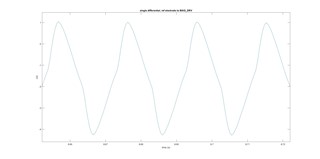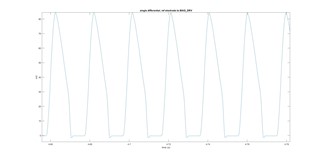Hello,
I have to develop a system for EMG acquisition, I am using the ADS1299EEG FE Rev A evaluation board. My reference electrode is placed between the signal electrodes, about 10 mm of distance between one electrode and the other. In order to better understand how the system works, I would like to ask you some questions:
- Why does the noise signal that I catch have a DC component? Could you explain the physical reason for this (any model, paper, phenomenological motivation)? If I short the input pin (internally or externally), I measure correctly the expected offset relatively to the gain that I am using.
Sometime I observe also a drift of the signal.

2. Why if the reference electrode is connected to GND, the signal is clipped? Something with the bias current on INxP and/or INxN of the low noise PGA?
register values: from 0x0 to 0x17
thank you

